Director Albert Hughes warned me ahead of the final episode of Peacock’s John Wick spinoff series The Continental — by way of setting up the final all-out assault organized by a young Winston Scott the show had been building up to — that things were about to get pretty hairy. “Balls-to-the-wall, bat-s**t crazy,” were, in fact, his exact words.
Tech. Entertainment. Science. Your inbox.
Sign up for the most interesting tech & entertainment news out there.
By signing up, I agree to the Terms of Use and have reviewed the Privacy Notice.
If you haven’t yet caught up to the finale of The Continental that dropped on Friday, spoiler alert: The man wasn’t kidding. Hughes directed the first and third episodes of this 3-part shoot-a-rama set in and around the John Wick universe’s hotel for criminals, and Episode 3, titled Theatre of Pain, is indeed … a lot.
It’s basically 90ish minutes of gunplay, explosions, brutal fight scenes, bludgeonings, impalements, exquisitely choreographed martial arts, and generally wacky chaos set to a soundtrack of funk and soul classics that bring some levity to the unrelenting madness. This is a finale in which a killer at one point snorts coke off the blade of a machete, and a C4 vest brings a climactic fight scene to a satisfyingly explosive end.
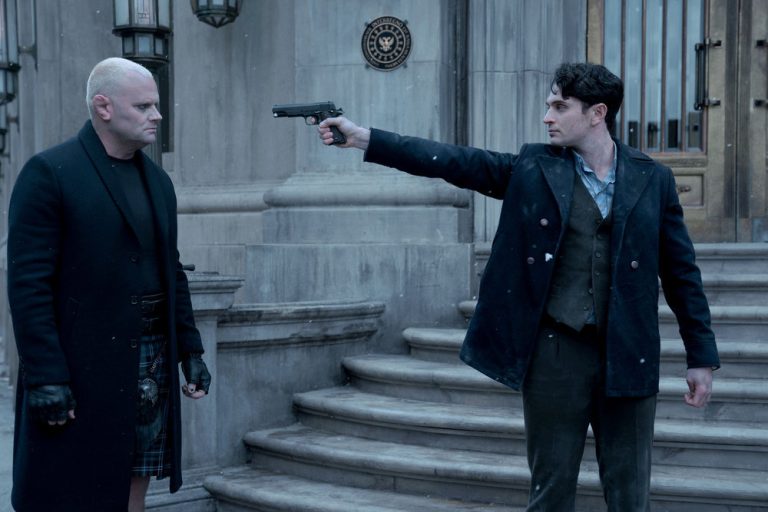 Kirk Ward as Kachynski and Colin Woodell as Winston in “The Continental.” Image source: Katalin Vermes/Starz Entertainment
Kirk Ward as Kachynski and Colin Woodell as Winston in “The Continental.” Image source: Katalin Vermes/Starz Entertainment
The ‘disco noir’ of Peacock’s The Continental
All of which is to say — The Continental is as much an assault on your senses as it is on the noirish, imposing hotel itself.
As of Friday, the entire limited series is now available to stream on Peacock. And if you’re a fan of the $1 billion, four-film John Wick franchise starring Keanu Reeves, then you already knew the ending the show was going to arrive at: The Continental in the hands of a more cunning than he looks Scott, whose ownership seems assured after he [spoiler] that masked High Table adjudicator in the closing moments of the show.
Knowing The Continental had to unfold toward that ultimate end — that Colin Woodell’s Scott, for example, was never going to be in any real danger — the success of the show thus rested entirely on its execution, no pun intended. And oh boy did this show have some exacting standards to try and live up to on that front.
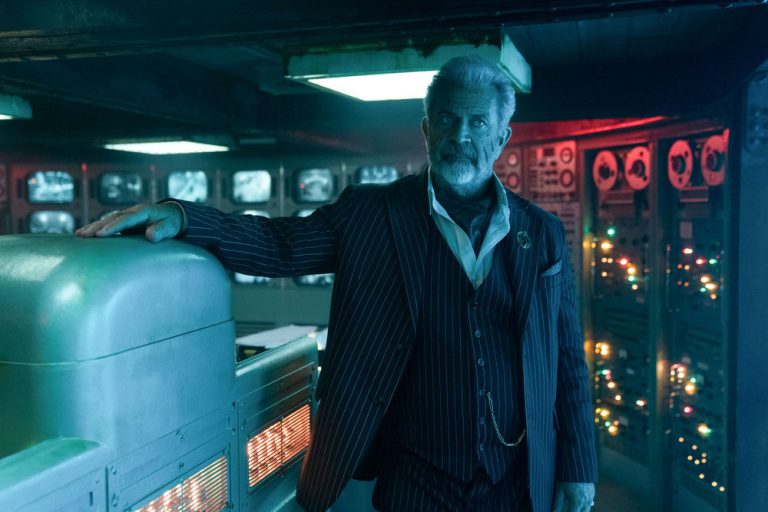 Mel Gibson as Cormac O’Connor. Image source: Katalin Vermes/Starz Entertainment
Mel Gibson as Cormac O’Connor. Image source: Katalin Vermes/Starz Entertainment
Because not only does the John Wick universe demand of any and all spinoffs a tongue wedged firmly in cheek; over-the-top villains; and, above all else, jaw-dropping fight scenes — this is a prequel we’re talking about here, one that takes place decades before the movies.
In other words, everyone’s favorite character is nowhere to be found.
‘There are rules at play here, silly boy’
That point is a big reason for many of the scathing reviews from critics who’ve panned the show as a pale imitation of the movies, devoid of the razzle-dazzle and the star who made them so much fun. “Loads incident and exposition into its four and a half hours (over three feature-length episodes) but still feels formless and indistinct,” tut-tuts The New York Times.
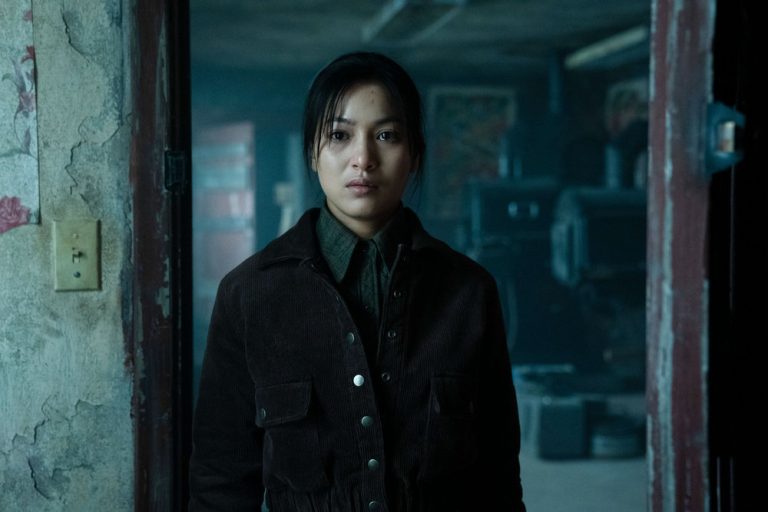 Nhung Kate as Yen in “The Continental.” Image source: Katalin Vermes/Starz Entertainment
Nhung Kate as Yen in “The Continental.” Image source: Katalin Vermes/Starz Entertainment
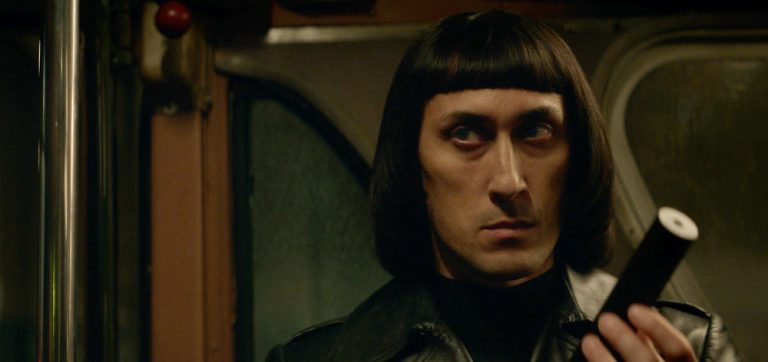 Mark Musashi as Hansel. Image source: Starz Entertainment
Mark Musashi as Hansel. Image source: Starz Entertainment
The show’s Rotten Tomatoes audience score, in contrast, currently stands at a respectable 80%, more or less a rebuke of the critics who whined about everything from The Continental’s casting of Mel Gibson as the villain to the fight scenes not looking as elegant as those from the movies (more on that in a moment).
What I especially wanted to hear from Hughes, meanwhile, is: Why a prequel at all? Why a focus on Winston Scott? And why center everything around the hotel-for-killers, given that the character of John Wick himself as played by Keanu is, of course, roughly 99% of the reason why fans loved the movies in the first place?
“The first script had already been done when it came to me,” Hughes said during our conversation. “There was no tracing where it would go, it was just a script that I read, and I go ‘Wow, this is interesting, and it’s from that world of John Wick and escapism.”
Expanding the world of the movies
They would go on to “noodle” some on that script, setting the stage for this new world populated by kooky killers and cunning antiheroes. Episode 2 dived even more into backstories and was largely character-based as Winston assembled his crew in the lead-up to the you-know-what hitting the fan in Episode 3.
“We were all coming out of trying times, Covid, and stressed out,” Hughes continued. “And I said, I just want to have fun. I think the audience just wants to have fun. That’s what I see in these movies. And I thought it was a pretty cool idea to explore one of the most mysterious elements of the John Wick film series, the Continental …The ‘why’ (about a prequel), to give you a clean answer, was just to have fun and explore more of the mythology and the mystery of the Continental and some of the High Table rules that come along with the movies.”
The show, shot in Budapest and Los Angeles, was being made as John Wick: Chapter 4 was finishing its first round of post-production. John Wick director Chad Stahelski gave Hughes some advice — don’t try to copy the movies. Do your own thing, and don’t be afraid to have a little fun with it. What Hughes and the rest of the team behind The Continental ended up making, among other things, was a TV series pretty much in name only. The three episodes of the limited series are really three movie-length projects — albeit, without the benefit of being able to spread their action sequences across a giant screen, like the Wick films could.
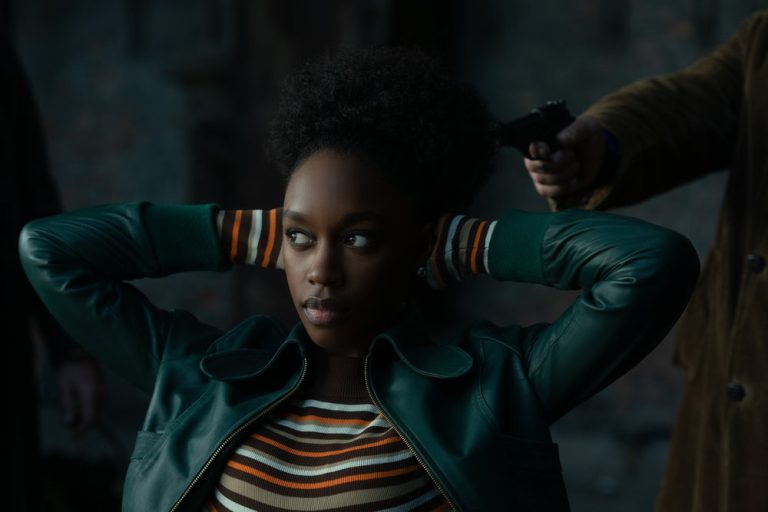 Jessica Allain as Lou. Image source: Katalin Vermes/Starz Entertainment
Jessica Allain as Lou. Image source: Katalin Vermes/Starz Entertainment
Format-wise, with its feet in both worlds, the show could take its time without feeling the normal length constraints of a show. And as for the critics who’ve groused that The Continental’s fight scenes aren’t in the same league as the movies, Hughes counters that there was a distinction by design. The fight style, he says, is meant to evoke the 70s.
‘Love. Can you dig it?’
“It’s not going to be the way it is in John Wick, which is very modern, very MMA, with new guns and new techniques with guns. Frankie (Scott, Winston’s brother) had a more Marine style of fighting and gunplay. You had to go retro with everything, basically. The fighting, the look, the sound, the production design. Cars. You’re creating a time period that doesn’t exist anymore.”
 Colin Woodell as Winston Scott. Image source: Katalin Vermes/Starz Entertainment
Colin Woodell as Winston Scott. Image source: Katalin Vermes/Starz Entertainment
Early on in the process, Hughes and showrunner Kirk Ward decided to write the words “Disco Noir” on a wall where they were working. It would serve as a North Star, emblematic of the vibe they wanted to ensure pervaded the show. Before long, music filled their workroom — everyone taking turns sharing favorite tracks from their youth that would inform a soundtrack that veers from Donna Summers’ I Feel Love, the very first song we hear, to New York Groove from KISS guitarist Ace Frehly’s 1978 solo album, that last song before the credits roll.
And that final song is, I think, a note-perfect way to bring the curtains down on an uneven but escapist romp that hardcore Wick fans should really have no trouble appreciating. I dare say, you could even imagine John Wick’s cravat-wearing friend himself humming along, as he drives away into the night, The Continental now firmly in his control: “In the back of my Cadillac / a wicked lady sitting by my side, saying ‘Where are we?’ / Stopped at 3rd and 43, exit to the right / It’s gonna be ecstasy / This place was meant for me.”
>>> Read full article>>>
Copyright for syndicated content belongs to the linked Source : BGR – https://bgr.com/entertainment/the-continental-director-breaks-down-how-peacocks-john-wick-prequel-came-to-life/































